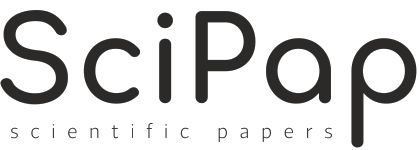Publication Ethics Statement
The editors of this journal enforce a rigorous peer-review process together with strict ethical policies and standards to ensure to add high quality scientific works to the field of scholarly publication. Unfortunately, cases of plagiarism, data falsification, image manipulation, inappropriate authorship credit, and the like, do arise. The editors take such publishing ethics issues very seriously and are trained to proceed in such cases with a zero tolerance policy.
Our journal follows the Publication Ethics (COPE). We fully adhere to its Code of Conduct and to its Best Practice Guidelines.
Authors wishing to publish their papers in Scipap must abide to the following:
- Any facts that might be perceived as a possible conflict of interest of the author(s) must be disclosed in the paper prior to submission.
- Authors should accurately present their research findings and include an objective discussion of the significance of their findings.
- Data and methods used in the research need to be presented in sufficient detail in the paper, so that other researchers can replicate the work.
- Raw data should preferably be publicly deposited by the authors before submission of their manuscript. Authors need to at least have the raw data readily available for presentation to the referees and the editors of the journal, if requested. Authors need to ensure appropriate measures are taken so that raw data is retained in full for a reasonable time after publication.
- Simultaneous submission of manuscripts to more than one journal is not tolerated.
- Republishing content that is not novel is not tolerated (for example, an English translation of a paper that is already published in another language will not be accepted).
- If errors and inaccuracies are found by the authors after publication of their paper, they need to be promptly communicated to the editors of this journal so that appropriate actions can be taken.
- Your manuscript should not contain any information that has already been published. If you include already published figures or images, please obtain the necessary permission from the copyright holder to publish under the CC-BY license.
- Plagiarism, data fabrication and image manipulation are not tolerated.
- Image files must not be manipulated or adjusted in any way that could lead to misinterpretation of the information provided by the original image.
Our in-house editors will investigate any allegations of publication misconduct and may contact the authors' institutions or funders if necessary. If evidence of misconduct is found, appropriate action will be taken to correct or retract the publication. Authors are expected to comply with the best ethical publication practices when publishing with our journal.
Research Involving Human Participants
For studies involving human subjects (e.g. surveys, questionnaires, social media research), all participants must be fully informed if the anonymity is assured, why the research is being conducted, how their data will be used and if there are any risks associated. As with all research involving humans, ethical approval from an appropriate ethics committee must be obtained prior to conducting the study. If ethical approval is not required, authors must either provide an exemption from the ethics committee or are encouraged to cite the local or national legislation that indicates ethics approval is not required for this type of study. Where a study has been granted exemption, the name of the ethics committee which provided this should be stated in Section ‘Institutional Review Board Statement’ with a full explanation regarding why ethical approval was not required.
If the study reports research involving vulnerable groups, additional reviews may be conducted. The submitted manuscripts are checked by the editorial team, and documentary evidence (blank consent forms and relevant discussion documents of the ethics committee, if applicable) must be submitted upon request. In addition, when the study describes groups by race, ethnicity, gender, disability, disease, etc., the article needs to clearly explain why this classification is needed.
Plagiarism Test
Plagiarism includes copying text, ideas, images, or data from another source, even from your own publications, without giving any credit to the original source. Reuse of text that is copied from another source must be between quotes and the original source must be cited. If a study's design or the manuscript's structure or language has been inspired by previous works, these works must be explicitly cited. If plagiarism is detected during the peer review process, the manuscript may be rejected. If plagiarism is detected after publication, we may publish a correction or retract the paper.
An Initial Plagiarism Check is carried out for every manuscript submitted to the journal. Therefore, manuscripts with a high "Similarity Index" are examined if the other matching sources have been properly cited.
Code of Conduct
As described above, our journal abide to the COPE’s Code of Conduct. Our journal follow the COPE Guidelines and Core Practices as prescribed by COPE. Such core practices pertain to the following 10 contexts:

